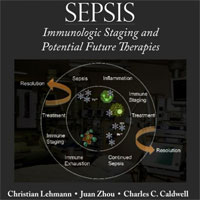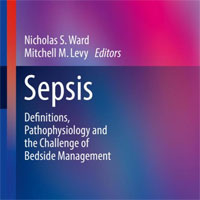Tag: resuscitation
Ascorbic Acid, Corticosteroids, and Thiamine in Sepsis
The combination of thiamine, ascorbic acid, and corticosteroids is a promising new therapy for sepsis resuscitation but currently lacks robust evidence to support its widespread use. The potential effectiveness of this medication... read more
Machine Learning for the Prediction of Volume Responsiveness in Patients with Oliguric AKI in Critical Care
Excess fluid balance in acute kidney injury (AKI) may be harmful, and conversely, some patients may respond to fluid challenges. This study aimed to develop a prediction model that can be used to differentiate between volume-responsive... read more
Oxygen Therapy in Acute Resuscitation
At present, evidence is lacking to support routine liberal oxygen administration in acutely ill patients and, in most circumstances, a reasonable approach is to titrate supplemental oxygen to achieve an arterial oxygen saturation... read more
Management of Refractory Vasodilatory Shock
Refractory shock is a lethal manifestation of cardiovascular failure defined by an inadequate hemodynamic response to high doses of vasopressor medications. Approximately 7% of critically ill patients will develop refractory... read more
Critical Care Controversies: The REBEL vs The SKEPTIC at #SMACC 2019
On the last day of the last SMACC conference, Dr. Ken Milne (The SGEM) and I had a cage match debating four critical care controversies. It was all done in good fun with both of us taking our opportunities to poke a little... read more
Sepsis and Septic Shock – What Matters from EM Cases Course
In this podcast Dr. Sara Gray, intensivist and emergency physician, co-author of The CAEP Sepsis Guidelines, answers questions such as: How does one best recognize occult septic shock? How does SIRS, qSOFA and NEWS compare... read more
ECMO Global Trends and Use in Cardiopulmonary Resuscitation
In this video, Dr. Ravi Thiagarajan, Chief of the Division of Cardiac Critical Care at Boston Children's Hospital, and Professor of Pediatrics at Harvard Medical School, outlines past and present trends in ECMO use across... read more
Monitoring the Relationship Between Changes in Cerebral Oxygenation and Electroencephalography Patterns During Cardiopulmonary Resuscitation
Real-time monitoring of cerebral oxygenation and function during cardiac arrest resuscitation is feasible. Although voltage suppression is the commonest electroencephalography pattern, other distinct patterns exist that may... read more
Extravascular Lung Water as a Target for Intensive Care
Extravascular lung water (EVLW) remains a useful guide for monitoring pulmonary edema (PO) and vascular permeability in sepsis, acute respiratory distress syndrome (ARDS), and heart failure. In addition, EVLW has a prognostic... read more
Effect of a Resuscitation Strategy Targeting Peripheral Perfusion Status vs Serum Lactate Levels on 28-Day Mortality Among Patients With Septic Shock
Among patients with septic shock, a resuscitation strategy targeting normalization of capillary refill time, compared with a strategy targeting serum lactate levels, did not reduce all-cause 28-day mortality. Among 424 patients... read more
Should We Stop Trending Lactate in Septic Shock?
There may be a tendency to cement guideline recommendations into our collective minds as inalienable and sacrosanct – as if carved onto stone tablets and brought down to us from the heights of Mount Sinai. Thoughtful medicine,... read more
Hypertriglyceridemic pancreatitis: Can we defuse the bomb?
Hypertriglyceridemia causes ~9% of pancreatitis, the third most common cause after alcohol and gallstones. It is a risk factor for severe pancreatitis, making it more frequent among ICU patients with pancreatitis. I see... read more
Hoopla Aside, hs-cTnI is Not Catching Missed Mis
We have been searching for a tool to identify myocardial infarction patients who are truly safe for discharge ever since Pope, et al., found that we were discharging two percent of patients with MIs from the emergency department.... read more
Unintended Consequences: Fluid Resuscitation Worsens Shock in an Ovine Model of Endotoxemia
Fluid resuscitation resulted in a paradoxical increase in vasopressor requirement. Additionally, it did not result in improvements in any of the measured microcirculatory- or organ-specific markers measured. The increase... read more
Metabolic Sepsis Resuscitation
There are roughly two strategies for adjusting the intensity of treatment: Titrated strategy: Treatment intensity is adjusted to match the severity of the disease. Escalation-deescalation strategy: Treatment intensity is... read more
Host Genetic Variants in Sepsis Risk
Published data revealed that host genetic variants have a substantial influence on sepsis susceptibility. However, the results have been inconsistent. We aimed to systematically review the published studies and quantitatively... read more
Shock: Roadside to Resus
If you're involved in the care of critically unwell patients then you will frequently encounter patients who are shocked. The European Society of Intensive Care Medicine defines shock as; "Life-threatening, generalized... read more
The Shocked Intubation: Definitive Airway Sans Hypotension
Not many aspects of Emergency Medicine define our specialty better than resuscitation, and few concepts exemplify resuscitation better than shock and intubation. Yet few words together strike greater fear in the minds of... read more
Patient-tailored Triage Decisions by Anesthesiologist-staffed Prehospital Critical Care Teams
The primary objective was to estimate the incidence of patients in the Central Denmark Region triaged to bypass the local emergency department without being part of a predefined fast-track protocol. The secondary objective... read more
Principles of Fluid Management and Stewardship in Septic Shock
There are only four major indications for fluid administration in the critically ill: resuscitation, maintenance, replacement and nutrition (enteral or parenteral). In this review, a conceptual framework is presented looking... read more
Fluid Responsiveness in a Hemodynamically Unstable Patient
Only half of patients who are hemodynamically unstable will respond to a fluid bolus. There are no historical or physical examination findings that can help us decide whether a patient is a fluid responder, but we must treat... read more
Crystalloids vs. Colloids for Fluid Resuscitation in the ICU
This systematic review and meta-analysis, which included only high-level evidence from randomized, controlled trials (RCTs) conducted in intensive care settings, revealed that crystalloids were less effective than colloids... read more









